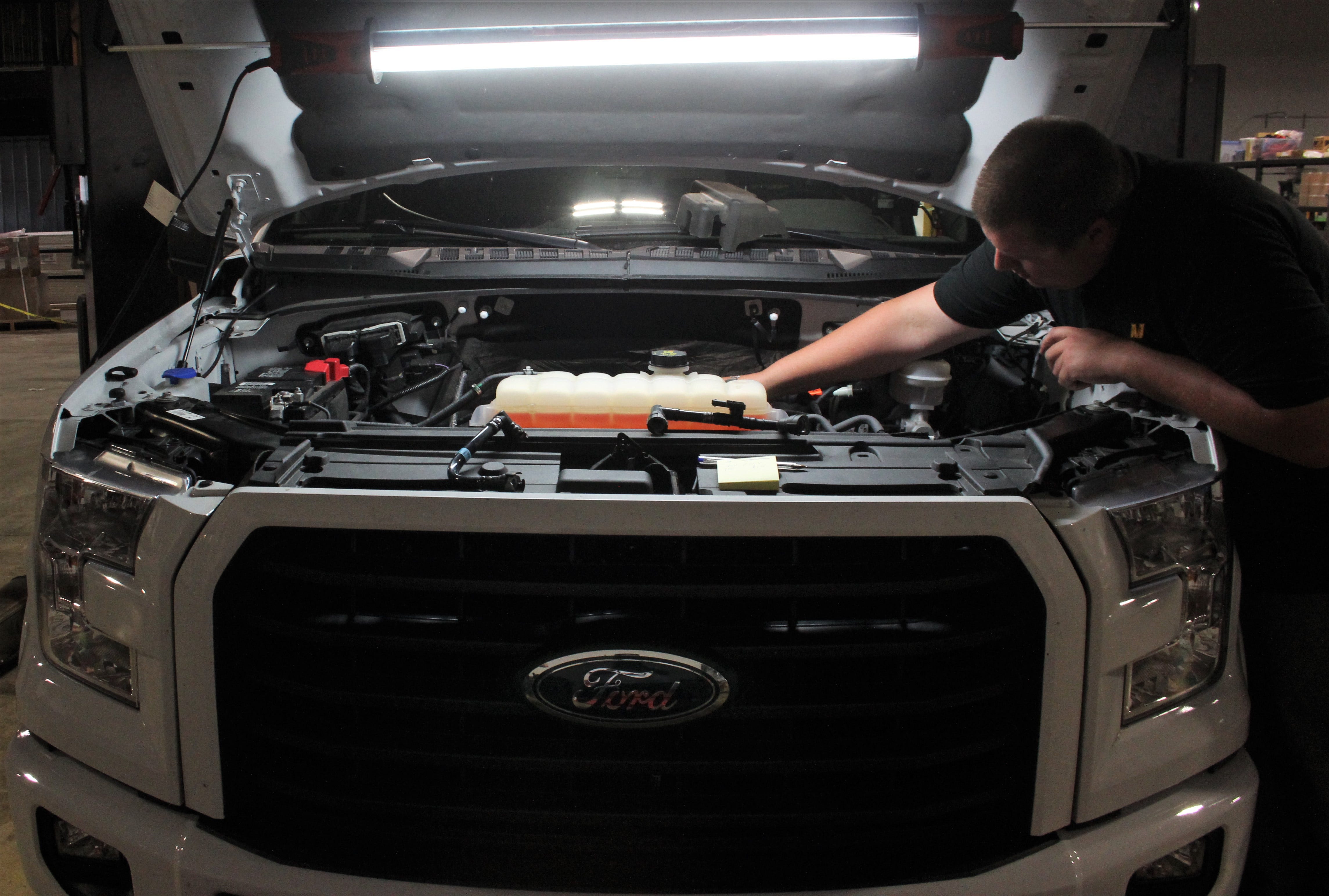
Bye-Bye Blow-By - Catch Can R&D, Part 1: Stock Evaluation
We have begun developing a catch can system for the 2015+ Ford F150 EcoBoost! This project, although small (in components), could have a significant impact on the F150 EcoBoost market. Why? There are not many direct-fit options, and there are a lot of these trucks out there. Oil blow-by can be pretty serious, especially on turbo applications, and this truck is twin turbocharged! Nonetheless, many gearheads tend to question the merits of using a catch can. So before we go any further, let's briefly explain what a catch can actually does and why it's so beneficial!
Port vs. Direct Injection
With port-injected engines, the fuel injectors are inside the intake manifold and produce the fuel stream that mixes with the air. This mixture is shot into the combustion chamber, right past the valve area, helping to keep the valves clean and free of deposits. We all know that fuel is a great solvent.
Modern, direct-injected engines have a different approach. The injector is inside the combustion chamber, so the fuel doesn't reach the valves as it does with port injection. The valves don't get sprayed with the fuel mixture, leading to a quicker buildup of deposits that can accumulate quite rapidly. This is mainly due to oil and fuel vapors getting vented into the intake via positive crankcase ventilation (PCV) and crankcase ventilation (CCV) valves. On this truck, the PCV is located on the passenger side of the engine and the CCV is on the driver side, but more on that later.
Direct injection works this way, to reduce emissions into our atmosphere. These vapors are routed back into the engine instead of into the atmosphere, which is the compromise we make for greener CO2 emissions. But, catch cans allow us to have the best of both world. A catch can is essentially a filter that piggy-backs onto the PCV/CCV system to catch those nasty oil and fuel vapors before they get routed back into your intake and engine. On a lot of applications, oil coats the inside of the intake, and, on vehicles with forced induction, the charge pipes are affected, since the oil has nowhere else to go. We definitely don't want that to happen, which is why we are creating a catch can setup for preventative measures.
So although this is not a performance mod, your valves will thank you later on down the road!
That was a mouthful. Let's get on with the project!
The F150's Stock System Evaluation
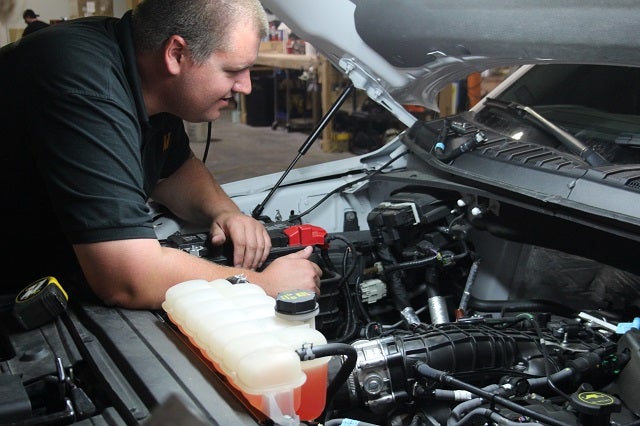
Our engineer, Dan, mulling over his ideas for a catch can setup
The first step is locating the PCV/CCV ports. After a quick inspection of the engine bay, our engineer, Dan, was able to easily identify them. Let's take a look.
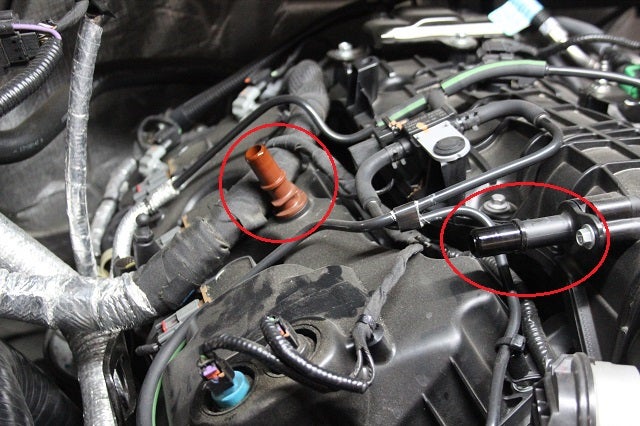
PCV ports circled in red
The photo above shows the PCV side with the rubber hoses detached from their quick-disconnect fittings circled in red. Here is where one side of our hoses will be attached to catch those vapors.
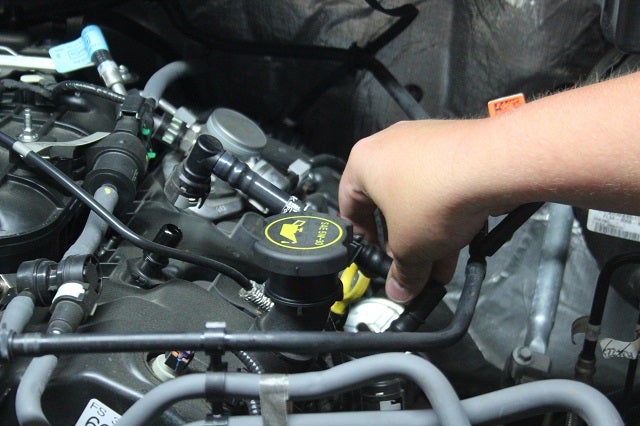
Taking off the CCV sensor
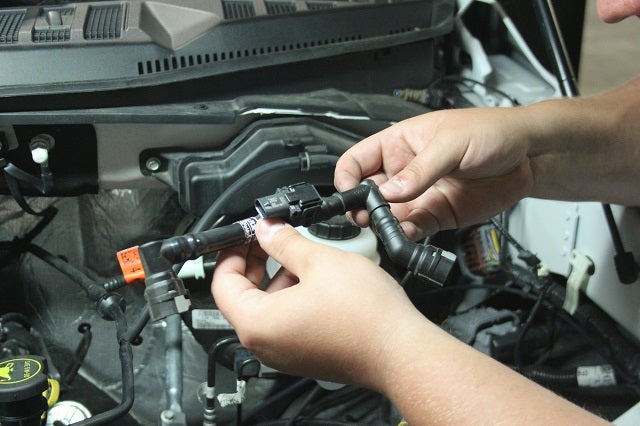
CCV pressure sensor
Pictured above is the CCV side of the system, which is a bit more complicated. A new feature added to the 2015+ F150 EcoBoost motors is a CCV pressure sensor that is built into the hose. It is a pretty sensitive sensor and can quickly throw this truck into limp mode if it detects any increased pressure within the system. This could happen when you change lengths of the stock PCV/CCV hose setup. So that is something we will certainly have to monitor throughout our testing.
What's Next?
We know this truck can produce a higher amount of blow-by than most of the other applications for which we have developed direct-fit catch cans, so one catch can simply won't cut it here. This system will require a dual can setup to lengthen the time between drains. Check out where Dan has decided to mount these catch cans!
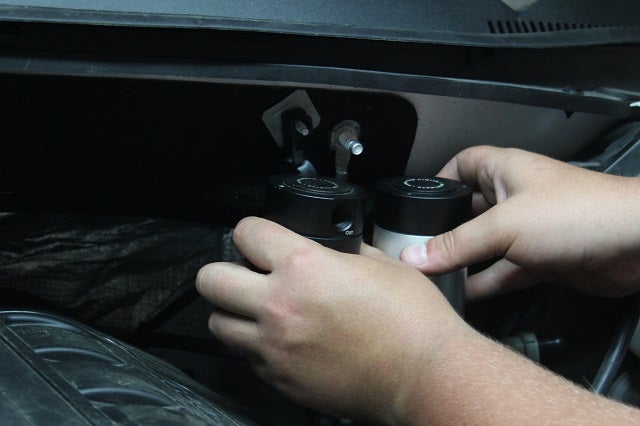
Mocking up catch can mounting location
A bracket for the cans can be secured to those grounding points. In the next post, we will discuss our bracket design and how we will route the hoses for this Ford F150 catch can project. Stay tuned!
-Diamaan




